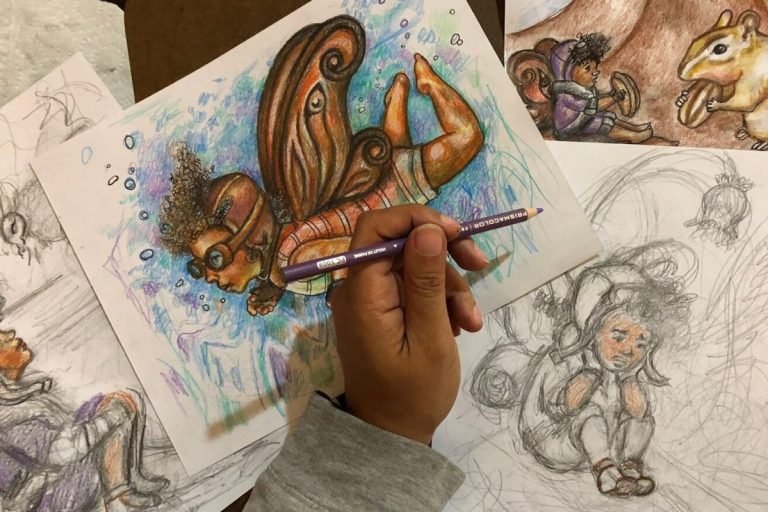When evaluating children’s books for references to substances like THC, consider delta 8 carts and similar products. Identify language, imagery, or messages that may normalize drug use and consider their impact on young readers. Incorporate expert perspectives to discern the educational value versus potential harm in such content. When faced with texts featuring drug-related themes, discuss these themes responsibly with children to foster critical understanding. For further insights, explore comprehensive discussions on THC in literature and related topics to enhance your approach in selecting age-appropriate materials.
Evaluating Children’s Literature for THC
Red Flags to Look For
When evaluating children’s literature for potentially harmful content, it’s crucial to be vigilant about certain red flags that may indicate mature themes unsuitable for young readers. It’s essential to check for explicit language that could be inappropriate or confusing to children. Words or phrases charged with intense emotions or negative connotations might instill unwanted behavior or attitudes. Similarly, keep an eye out for depictions of violence or aggression that could seem too realistic or frightening, overshadowing the innocence central to children’s literature.
Look for the presence of adult themes such as substance use, which are generally unsuitable for a young audience. References to issues like vaping or other adult activities can detract from the book’s educational value and may require context that isn’t child-friendly. For more insight on such themes, consider exploring our article on Vaping in Literature.
Additionally, be cautious of stories with negative social messages or stereotypes that could influence a child’s developing worldview. Literature aimed at young readers should ideally strengthen positive values, encouraging empathy and understanding. Ensuring that the tales read by children are nurturing and appropriate helps foster an enriching experience that aligns with their developmental needs.
Balancing Caution with Freedom
Navigating the intricate balance between protecting children and fostering an environment of literary freedom is an ongoing challenge for parents and educators. It’s essential to safeguard young readers from themes that could be overwhelming or inappropriate for their age while also encouraging their natural curiosity and love for reading. Recognizing the value of a diverse array of stories, including those that gently introduce complex life concepts, can aid in developing empathy and critical thinking skills in children.
When evaluating children’s literature, consider the book’s age-appropriateness in content and theme. A well-rounded approach includes examining the context in which potentially sensitive topics are presented. Stories that provide learning opportunities, offered with care and thoughtfulness, allow children to explore and understand their world safely.
Furthermore, communication is key. Encourage open discussions about books with your children, ensuring they feel comfortable expressing their thoughts and questions. This dialogue fosters a supportive environment where children learn to make thoughtful decisions about their reading choices.
Ultimately, balance is about trust–trusting yourself to guide and trusting the literature to enrich. By combining protective measures with the freedom to explore, we nurture young minds to become discerning and compassionate readers, ready to embrace the complexities of both literature and life.
Current Trends in Children’s Literature
Rise of Diverse Narratives
In the evolving world of children’s literature, diverse narratives play a crucial role in shaping young minds. This inclusivity extends to how delicate topics, such as THC, are presented or avoided in these stories. Parents and educators increasingly seek literature that not only captivates young readers but also conveys positive messages and avoids harmful themes. The conversation around such subjects encourages a reconsideration of what is deemed appropriate in literature aimed at children. Striking the right balance involves recognizing the impact of cultural diversity on storytelling, which emphasizes authenticity while steering clear of potentially harmful content. For further insights on delicate themes, such as the inclusion of elements like smoking or vaping, consider exploring Prohibited Topics as this can provide more context on content regulation. Expert insights suggest that incorporating diverse yet safe narratives can enrich children’s literature, providing a world of experiences while maintaining a supportive and educational framework. In fostering a love for reading, promoting inclusive stories that respect young audiences’ developmental needs remains vital.

Controversial Titles: Educational vs. Harmful
In the realm of children’s literature, some titles spark debate over their educational value and potential harmful content, creating a complex landscape for parents and educators. Books like “And Tango Makes Three,” which tells the true story of a same-sex penguin couple, are celebrated for promoting diversity and sparking conversations about different family structures. However, some parents view this content as controversial, preferring a traditional approach to themes of family.
Meanwhile, stories like Roald Dahl’s “The Witches,” which portrays its female villains with negative stereotypes, have raised concerns about reinforcing gender bias. Despite these criticisms, educators often find value in using such books to discuss critical thinking and challenge stereotypes. There is also “The Adventures of Captain Underpants,” which captivates young readers with humor but sometimes faces objections for its use of toilet humor and perceived promotion of mischief.
Parents and educators can turn these discussions into teachable moments, offering a balance between encouraging open-mindedness and ensuring age-appropriate content is introduced thoughtfully. Ultimately, fostering an open dialogue about book content and context can empower children to develop their understanding of diverse perspectives.
Practical Tips for Parents and Educators
Choosing Age-Appropriate Books
Selecting age-appropriate books for children is essential, especially when considering content that may contain THC (themes, humor, or characters that could be misunderstood or have unintended impacts on young minds). For toddlers and preschoolers, focus on picture books with simple language and positive messaging. Early elementary kids benefit from stories with clear moral lessons and imaginative adventures, while middle graders excel with books that offer relatable scenarios and opportunities for empathy. For teenagers, seek literature that encourages critical thinking and provides safe exploration of complex subjects. As you explore titles, always consider your child’s maturity level and interests. Reading together is a great way to supervise and discuss content, ensuring a supportive environment. Balancing entertainment and education helps nurture a lifelong love for reading while maintaining cognitive and emotional safety.

Dialogue and Engagement
Engaging children in conversations about the books they read plays a crucial role in fostering their understanding and critical thinking skills. When aspects of potentially harmful content (THC) arise in children’s literature, it’s important for parents, educators, and caregivers to create an open dialogue. This engagement not only helps children process and question what they read but also empowers them to develop their own viewpoints. By discussing characters’ actions or story outcomes, adults can provide context and encourage children to think beyond the text. This practice nurtures a habit of inquiry that is essential for young minds. Rather than avoiding challenging topics, using them as teachable moments can greatly enhance a child’s learning experience and broaden their perspective.
In summary, navigating the realm of children’s literature requires a balance of awareness and proactive engagement. By understanding the role of potentially harmful content (THC), parents, educators, and caregivers can make informed decisions about the books they introduce to children. Recognizing age-appropriate material enhances the reading experience and fosters healthy developmental growth. With expert insights and practical advice, it is possible to create a nurturing environment where literature serves as a powerful tool for learning and imagination. By staying informed and actively participating in book selections, adults can ensure their children’s literary adventures are both safe and enriching.











